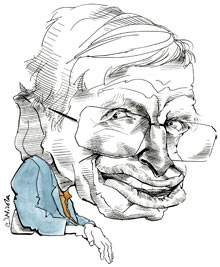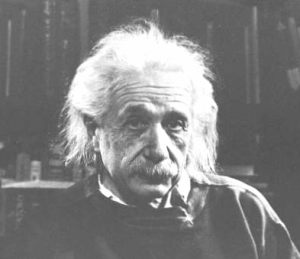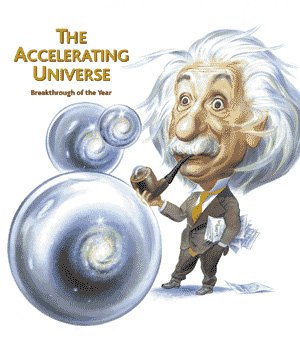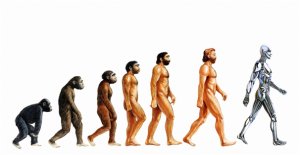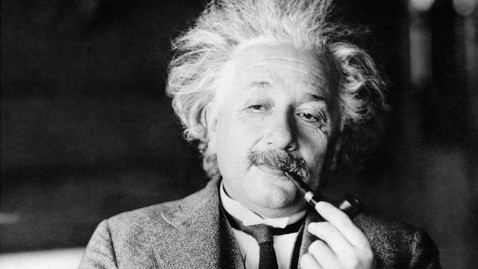 CAMBRIDGE, ENGLAND—British scientist Stephen Hawking has decoded some of the most puzzling mysteries of the universe but he has left one mystery unsolved: How he has managed to survive so long with such a crippling disease.
CAMBRIDGE, ENGLAND—British scientist Stephen Hawking has decoded some of the most puzzling mysteries of the universe but he has left one mystery unsolved: How he has managed to survive so long with such a crippling disease.
 NOTE: This article has been edited from a previous version. Theoretical physicists may have found the missing key to the workings of the universe: the Higgs boson, a subatomic particle thought responsible for giving mass to all particles in the universe. A group of 3,000 scientists around the world, including seven faculty members and several graduate students from the University of Toronto, have contributed to the research. They don’t have enough evidence to declare it a discovery yet, but this is the closest the Higgs hunters have come to the particle in more than 40 years. But why is this important? Robert Orr, the founder of the U of T research team, explains in the following edited interview with the Star.
NOTE: This article has been edited from a previous version. Theoretical physicists may have found the missing key to the workings of the universe: the Higgs boson, a subatomic particle thought responsible for giving mass to all particles in the universe. A group of 3,000 scientists around the world, including seven faculty members and several graduate students from the University of Toronto, have contributed to the research. They don’t have enough evidence to declare it a discovery yet, but this is the closest the Higgs hunters have come to the particle in more than 40 years. But why is this important? Robert Orr, the founder of the U of T research team, explains in the following edited interview with the Star.
 முற்குறிப்பு : இக்கட்டுரையில் உள்ளடங்கியிருக்கும் தகவல்கள் ஒருசாராருக்கு தமது வாழ்நாளில் கேள்விப்பட்டிராத, ஒரு சுத்தப் பைத்தியக்காரத்தனமான, நம்பிக்கைக்கு அப்பாற்பட்ட விடயமாக தோற்றமளிக்கலாம். ஆனால் இது சம்பந்தமான ஆர்வமுள்ள மறுசாராருக்கு ஒரு புதுச்சிந்தனை ஓட்டத்தை தூண்டிவிடுவதாக இருக்குமென்பதுடன் இக்கட்டுரை ஒரு விருந்தாகக்கூட அமையலாம். அவையெல்லாம் அவரவர்கள் கொண்ட அறிவையும் அதில் ஊற்றெடுக்கும் சிந்தனைகளின் பரிமாணங்களையும் அடிப்படையாகக் கொண்டது. இங்கு நான் வேற்றுகிரக உயிரினங்கள் உண்டு என்று அவற்றின் இருப்பை நிறுவ வரவில்லை. இக்கட்டுரை அத்தளத்தினை தாண்டி அவர்களுடன் ஏற்பட்ட தொடர்பைப்பற்றி ஆதாரங்களுடன் விபரிக்க முற்படுகிறது. என்னைப் பொறுத்தவரையில் எமது சிற்றறிவுகொண்டு இப்பரந்த முடிவற்ற பிரபஞ்சத்திலே வேற்றுக்கிரக உயிரினங்களின் இருப்பை மறுப்பது இப்பூமியிலே மனிதனது இருப்பை மறுப்பதற்கு ஒப்பானது.
முற்குறிப்பு : இக்கட்டுரையில் உள்ளடங்கியிருக்கும் தகவல்கள் ஒருசாராருக்கு தமது வாழ்நாளில் கேள்விப்பட்டிராத, ஒரு சுத்தப் பைத்தியக்காரத்தனமான, நம்பிக்கைக்கு அப்பாற்பட்ட விடயமாக தோற்றமளிக்கலாம். ஆனால் இது சம்பந்தமான ஆர்வமுள்ள மறுசாராருக்கு ஒரு புதுச்சிந்தனை ஓட்டத்தை தூண்டிவிடுவதாக இருக்குமென்பதுடன் இக்கட்டுரை ஒரு விருந்தாகக்கூட அமையலாம். அவையெல்லாம் அவரவர்கள் கொண்ட அறிவையும் அதில் ஊற்றெடுக்கும் சிந்தனைகளின் பரிமாணங்களையும் அடிப்படையாகக் கொண்டது. இங்கு நான் வேற்றுகிரக உயிரினங்கள் உண்டு என்று அவற்றின் இருப்பை நிறுவ வரவில்லை. இக்கட்டுரை அத்தளத்தினை தாண்டி அவர்களுடன் ஏற்பட்ட தொடர்பைப்பற்றி ஆதாரங்களுடன் விபரிக்க முற்படுகிறது. என்னைப் பொறுத்தவரையில் எமது சிற்றறிவுகொண்டு இப்பரந்த முடிவற்ற பிரபஞ்சத்திலே வேற்றுக்கிரக உயிரினங்களின் இருப்பை மறுப்பது இப்பூமியிலே மனிதனது இருப்பை மறுப்பதற்கு ஒப்பானது.

 [இக்கட்டுரை ஏற்கனவே பதிவுகள் இதழில் பிரசுரமானது. தற்போது ஒருங்குறியில் பதிவுசெய்வதன் அவசியம் கருதி மீள்பிரசுரம் செய்யப்படுகின்றது. இது போல் ஜெயபாரதன் அவர்களின் ஏனைய கட்டுரைகளும் மீள்பிரசுரம் செய்யப்படும். இது போல் ஏனையவர்களின் ஆக்கங்களும் படிப்படியாகப் பதிவுகளில் மீள்பிரசுரமாகும் — பதிவுகள்] விஞ்ஞானத் தத்துவங்கள் புதிதாய் எழுந்தன!இருபதாம் நூற்றாண்டின் நுழைவாயிலில் பூர்வீகப் பௌதிக விஞ்ஞானக் கருத்துக் கள் பல கீழே தள்ளப் பட்டுப், புரட்சிகரமான புது விஞ்ஞானக் கோட்பாடுகள் தோன்றின. அணுவின் அமைப்பு, அண்ட வெளி காலக் கோட்பாடு, பொருள் சக்தி உடன்பாடு போன்ற பழைய தத்துவங்கள் பல தகர்க்கப் பட்டு, அவை புதுப்பிக்கப் பட்டன. 19 ஆம் நூற்றாண்டு விஞ்ஞான நிபுணர்கள் மைக்கேல் ·பாரடே, ஜேம்ஸ் மாக்ஸ்வெல் ஆகியோர் படைத்த பூர்வீக நியதி, மின்காந்தவியல் [Electromagnetism] ஒன்றைத் தவிர மற்றவை யாவும் மாற்றப் பட்டன. அப்போது உதித்ததுதான் ஐன்ஸ்டைன் படைத்த “ஒப்பியல் நியதி” [Theory of Relativity]. அகில வெளி, காலம், பிண்டம், சக்தி [Space, Time, Matter, Energy] பற்றிய எளிய மெய்ப்பாடுகளை அடிப்படையாக் கொண்டு எழுதப் பட்டது, ஒப்பியல் நியதி! புது பௌதிகத் தத்துவமான அவரது நியதியைப் பலர் முதலில் ஒப்புக் கொள்ள வில்லை! பலருக்குப் புரிய வில்லை! பலர் எதிர்த்து வாதாடினர்! மானிட சிந்தனை யூகித்த மாபெரும் எழிற் படைப்பு, இவ்வரிய “ஒப்பியல் நியதி”. பல நூற்றாண்டுகளாய் பரந்த விஞ்ஞான மாளிகை எழுப்பிய, உலகின் உன்னத மேதைகளான, ஆர்க்கிமெடிஸ் [Archimedes], காபர்னிகஸ் [Copernicus], காலிலியோ [Galileo], கெப்ளர் [Kepler], நியூட்டன் [Newton], ·பாரடே [Faraday], மாக்ஸ்வெல் [Maxwell] ஆகியோரின் தோள்கள் மீது நின்று கொண்டுதான், ஐன்ஸ்டைன் தனது ஒப்பற்ற அகில வேதத்தை ஆக்கம் செய்தார்.
[இக்கட்டுரை ஏற்கனவே பதிவுகள் இதழில் பிரசுரமானது. தற்போது ஒருங்குறியில் பதிவுசெய்வதன் அவசியம் கருதி மீள்பிரசுரம் செய்யப்படுகின்றது. இது போல் ஜெயபாரதன் அவர்களின் ஏனைய கட்டுரைகளும் மீள்பிரசுரம் செய்யப்படும். இது போல் ஏனையவர்களின் ஆக்கங்களும் படிப்படியாகப் பதிவுகளில் மீள்பிரசுரமாகும் — பதிவுகள்] விஞ்ஞானத் தத்துவங்கள் புதிதாய் எழுந்தன!இருபதாம் நூற்றாண்டின் நுழைவாயிலில் பூர்வீகப் பௌதிக விஞ்ஞானக் கருத்துக் கள் பல கீழே தள்ளப் பட்டுப், புரட்சிகரமான புது விஞ்ஞானக் கோட்பாடுகள் தோன்றின. அணுவின் அமைப்பு, அண்ட வெளி காலக் கோட்பாடு, பொருள் சக்தி உடன்பாடு போன்ற பழைய தத்துவங்கள் பல தகர்க்கப் பட்டு, அவை புதுப்பிக்கப் பட்டன. 19 ஆம் நூற்றாண்டு விஞ்ஞான நிபுணர்கள் மைக்கேல் ·பாரடே, ஜேம்ஸ் மாக்ஸ்வெல் ஆகியோர் படைத்த பூர்வீக நியதி, மின்காந்தவியல் [Electromagnetism] ஒன்றைத் தவிர மற்றவை யாவும் மாற்றப் பட்டன. அப்போது உதித்ததுதான் ஐன்ஸ்டைன் படைத்த “ஒப்பியல் நியதி” [Theory of Relativity]. அகில வெளி, காலம், பிண்டம், சக்தி [Space, Time, Matter, Energy] பற்றிய எளிய மெய்ப்பாடுகளை அடிப்படையாக் கொண்டு எழுதப் பட்டது, ஒப்பியல் நியதி! புது பௌதிகத் தத்துவமான அவரது நியதியைப் பலர் முதலில் ஒப்புக் கொள்ள வில்லை! பலருக்குப் புரிய வில்லை! பலர் எதிர்த்து வாதாடினர்! மானிட சிந்தனை யூகித்த மாபெரும் எழிற் படைப்பு, இவ்வரிய “ஒப்பியல் நியதி”. பல நூற்றாண்டுகளாய் பரந்த விஞ்ஞான மாளிகை எழுப்பிய, உலகின் உன்னத மேதைகளான, ஆர்க்கிமெடிஸ் [Archimedes], காபர்னிகஸ் [Copernicus], காலிலியோ [Galileo], கெப்ளர் [Kepler], நியூட்டன் [Newton], ·பாரடே [Faraday], மாக்ஸ்வெல் [Maxwell] ஆகியோரின் தோள்கள் மீது நின்று கொண்டுதான், ஐன்ஸ்டைன் தனது ஒப்பற்ற அகில வேதத்தை ஆக்கம் செய்தார்.
 பில் கேட்ஸை அறிந்த அளவுக்கு ஸ்டீவ் ஜாப்ஸை உலகம் அறிந்ததில்லை. பில் கேட்ஸ் என்றவுடன் மைக்ரோசாப்ட் சாம்ராஜ்யமும், அவரது உலக மகா கோடீஸ்வரர் பட்டமும் நினைவுக்கு வரும். ஆனால், கம்ப்யூட்டர் உலகை பொறுத்தவரை ஜாப்ஸ் கோடீஸ்வர கேட்சை விட செல்வாக்கும் மதிப்பும் மிக்கவர். தொழில்நுட்பத்தில், அதிலும் குறிப்பாக வடிவமைப்பில் ஆர்வம் கொண்டவர்களுக்கு அவர் தான் ஆதர்ச நாயகன்! ஆப்பிளின் இணை நிறுவனர் என்று குறிப்பிடப்படும் ஜாப்ஸின் தொழில்நுட்ப புரிதலும் வடிவமைப்பில் அவருக்கு இருந்த ஆற்றலும் அசாத்தியமானவை. மேக்கின்டாஷில் துவங்கி, ஐபாட், ஐபோன், ஐபேட் என அவர் பெயர் சொல்லும் தயாரிப்புகள் அநேகம். ஒவொன்றுமே கம்ப்யூட்டர் உலகில் தொழில்நுட்ப மைல்கல்லாக விளங்குபவை. அந்தத் துறைகளையே மாற்றியமைத்தவை.
பில் கேட்ஸை அறிந்த அளவுக்கு ஸ்டீவ் ஜாப்ஸை உலகம் அறிந்ததில்லை. பில் கேட்ஸ் என்றவுடன் மைக்ரோசாப்ட் சாம்ராஜ்யமும், அவரது உலக மகா கோடீஸ்வரர் பட்டமும் நினைவுக்கு வரும். ஆனால், கம்ப்யூட்டர் உலகை பொறுத்தவரை ஜாப்ஸ் கோடீஸ்வர கேட்சை விட செல்வாக்கும் மதிப்பும் மிக்கவர். தொழில்நுட்பத்தில், அதிலும் குறிப்பாக வடிவமைப்பில் ஆர்வம் கொண்டவர்களுக்கு அவர் தான் ஆதர்ச நாயகன்! ஆப்பிளின் இணை நிறுவனர் என்று குறிப்பிடப்படும் ஜாப்ஸின் தொழில்நுட்ப புரிதலும் வடிவமைப்பில் அவருக்கு இருந்த ஆற்றலும் அசாத்தியமானவை. மேக்கின்டாஷில் துவங்கி, ஐபாட், ஐபோன், ஐபேட் என அவர் பெயர் சொல்லும் தயாரிப்புகள் அநேகம். ஒவொன்றுமே கம்ப்யூட்டர் உலகில் தொழில்நுட்ப மைல்கல்லாக விளங்குபவை. அந்தத் துறைகளையே மாற்றியமைத்தவை.
6 அக்டோபர், 2011 – தொழில்நுட்ப முன்னோடி ஸ்டீவ் ஜாப்ஸ் மறைந்தார்
உலகின் பிரபல கணினித் தொழில்நுட்ப நிறுவனங்களில் ஒன்றான, ஆப்பிள் நிறுவனத்தை கூட்டாக உருவாக்கியவர்களில் ஒருவரான, ஸ்டீவ் ஜாப்ஸ் , காலமானர். நீண்ட காலமாக , புற்று நோயால் அவதிப்பட்டுவந்த, ஜாப்ஸ், நேற்று இரவு காலமானதாக ஆப்பிள் நிறுவனம் அறிவித்தது. அவருக்கு வயது 56. உடல் நலக்குறைவு காரணமாக அவர் கடந்த ஆகஸ்டு மாதம்தான், ஆப்பிள் நிறுவனத்தின் தலைமை நிர்வாகி பதவியிலிருந்து விலகியிருந்தார். ஆப்பிள் மேக் கணினி,ஐ-பாட், ஐ-போன், ஐ-பேட் போன்ற நுட்பமான தொழில்நுட்பங்களைக் கொண்ட கருவிகளை ஆப்பிள் நிறுவனம் உருவாக்கிய முயற்சிகளுக்கு அவர் தலைமைத்துவம் முக்கியமானதாக இருந்தது.
“Some say the world will end in fire; Some say in ice…” What is the fate of the Universe? Probably…
 உயிர்வாழ்வதற்கு ஏற்ற சூழலைக்கொண்ட ஒரே ஒரு கிரகமாக தற்போதுவரை ஏகோபித்த உரிமையை கொண்டாடிவரும் நாம் வாழும் பூமியானது தன்னகத்தே பல மில்லியனுக்கும் மேற்பட்ட உயிரினங்களைக் கொண்டு காத்துவருகிறது. நான்கு பில்லியன் வருடங்களுக்கு முன்பு ஒரு கலத்தைக்கொண்ட அங்கியாக தோற்றம் பெற்ற உயிரின ஆட்சியானது இன்று பல சிக்கலான கட்டமைப்புகளையுடைய தாவரங்கள், விலங்குகளாக பரிணாம வளர்ச்சியடைந்து அவற்றின் உச்சமாக ஆற்றிவு படைத்த மனிதனை உருவாக்கியுள்ளது. ஒவ்வொரு யுகத்திலும் ஏதாவது ஒரு உயிரினம் கூர்ப்பில் தான் பெற்ற சாதகமான இயல்புகளை கொண்டு ஏனைய இனங்களை விட தன்னை மேன்நிலைப்படுத்தி பூமியின் ஆட்சியான உயிரினமாக இருப்பதும் பின்னர் அவ்வினம் பூமியில் ஏற்பட்ட பாரிய எரிகற்களின் மோதுகை, எரிமலைக்குமுறல்கள், நிலநடுக்கங்கள், வெள்ளப்பெருக்குகள் போன்ற இயற்கை அனர்த்தங்களாலும் அவற்றை தொடர்ந்து ஏற்பட்ட காலநிலை மாற்றங்களாலும் முற்றாக அழிவடைவதும் அவ்வெற்றிடத்தை இன்னுமொரு ஆட்சியான உயிரினம் இட்டு நிரப்புவதுமாக இருந்துவந்துள்ளது. அந்தவகையில் இரண்டு லட்சம் வருடங்களுக்கு முன் தோற்றம் பெற்றதாக நம்பப்படும் மனித இனமானது (Homo sapiens) இன்றுவரை தனது ஆட்சியை பூமியில் நிலைநிறுத்தியுள்ளது.
உயிர்வாழ்வதற்கு ஏற்ற சூழலைக்கொண்ட ஒரே ஒரு கிரகமாக தற்போதுவரை ஏகோபித்த உரிமையை கொண்டாடிவரும் நாம் வாழும் பூமியானது தன்னகத்தே பல மில்லியனுக்கும் மேற்பட்ட உயிரினங்களைக் கொண்டு காத்துவருகிறது. நான்கு பில்லியன் வருடங்களுக்கு முன்பு ஒரு கலத்தைக்கொண்ட அங்கியாக தோற்றம் பெற்ற உயிரின ஆட்சியானது இன்று பல சிக்கலான கட்டமைப்புகளையுடைய தாவரங்கள், விலங்குகளாக பரிணாம வளர்ச்சியடைந்து அவற்றின் உச்சமாக ஆற்றிவு படைத்த மனிதனை உருவாக்கியுள்ளது. ஒவ்வொரு யுகத்திலும் ஏதாவது ஒரு உயிரினம் கூர்ப்பில் தான் பெற்ற சாதகமான இயல்புகளை கொண்டு ஏனைய இனங்களை விட தன்னை மேன்நிலைப்படுத்தி பூமியின் ஆட்சியான உயிரினமாக இருப்பதும் பின்னர் அவ்வினம் பூமியில் ஏற்பட்ட பாரிய எரிகற்களின் மோதுகை, எரிமலைக்குமுறல்கள், நிலநடுக்கங்கள், வெள்ளப்பெருக்குகள் போன்ற இயற்கை அனர்த்தங்களாலும் அவற்றை தொடர்ந்து ஏற்பட்ட காலநிலை மாற்றங்களாலும் முற்றாக அழிவடைவதும் அவ்வெற்றிடத்தை இன்னுமொரு ஆட்சியான உயிரினம் இட்டு நிரப்புவதுமாக இருந்துவந்துள்ளது. அந்தவகையில் இரண்டு லட்சம் வருடங்களுக்கு முன் தோற்றம் பெற்றதாக நம்பப்படும் மனித இனமானது (Homo sapiens) இன்றுவரை தனது ஆட்சியை பூமியில் நிலைநிறுத்தியுள்ளது.
Particles faster than light: Revolution or mistake?
By Brian Vastag

In science, revolutions take time. Eureka moments can stretch into noggin-scratching years. And so, the day after news broke of a possible revolution in physics — particles moving faster than light, violating Einstein’s ultimate speed limit — a scientist leading the European experiment that made the discovery calmly explained it to a standing-room-only crowd at CERN, the giant particle accelerator straddling the Swiss-French border. The physicist, Dario Auterio, made no sweeping claims. He did not try to explain what the results might mean for the laws of physics, let alone the broader world. After an hour of technical talk, he simply said, “Therefore we present to you today this discrepancy, this anomaly.” But what an anomaly it may be. From 2009 through 2011, the massive OPERA detector buried in a mountain in Gran Sasso, Italy, recorded particles called neutrinos generated at CERN arriving a smidge too soon, faster than light can move in a vacuum. If the finding is confirmed by further experiments, it would throw more than a century of physics into chaos.
 In 1600, Giordano Bruno, an Italian priest and mathematician, was burned at the stake in Campo dei Fiori in Rome after the Inquisition found him guilty of heresy, a charge that included his belief that there were infinitely many worlds like our own. Four centuries later, at a time when a popular television show is called The Big Bang Theory, science has infiltrated popular culture to such a degree that a scientist can forcefully argue that, indeed, infinitely many universes may exist and that we live in but one of the many distinct parts of what is now known as the “multiverse.” Brian Greene is no stranger to controversial science. His first book, the Pulitzer Prize-nominated The Elegant Universe (1999), was an eloquent exposition of what was then still an obscure theory in physics: string theory. Greene’s book helped make string theory a household phrase. In The Hidden Reality, while admitting that string theory has in the meantime come under attack from many physicists as a theory that may be extremely hard to prove experimentally, Greene forges forward to explain an equally controversial theory – or rather, set of theories – about the plurality of universes. Having done so well in his exposition of string theory , Greene apparently feels safe from being figuratively burned at the stake. But this is not to say that the theories he writes about are easy to believe, feel natural in any way, or have any significant experimental evidence to support them.
In 1600, Giordano Bruno, an Italian priest and mathematician, was burned at the stake in Campo dei Fiori in Rome after the Inquisition found him guilty of heresy, a charge that included his belief that there were infinitely many worlds like our own. Four centuries later, at a time when a popular television show is called The Big Bang Theory, science has infiltrated popular culture to such a degree that a scientist can forcefully argue that, indeed, infinitely many universes may exist and that we live in but one of the many distinct parts of what is now known as the “multiverse.” Brian Greene is no stranger to controversial science. His first book, the Pulitzer Prize-nominated The Elegant Universe (1999), was an eloquent exposition of what was then still an obscure theory in physics: string theory. Greene’s book helped make string theory a household phrase. In The Hidden Reality, while admitting that string theory has in the meantime come under attack from many physicists as a theory that may be extremely hard to prove experimentally, Greene forges forward to explain an equally controversial theory – or rather, set of theories – about the plurality of universes. Having done so well in his exposition of string theory , Greene apparently feels safe from being figuratively burned at the stake. But this is not to say that the theories he writes about are easy to believe, feel natural in any way, or have any significant experimental evidence to support them.
